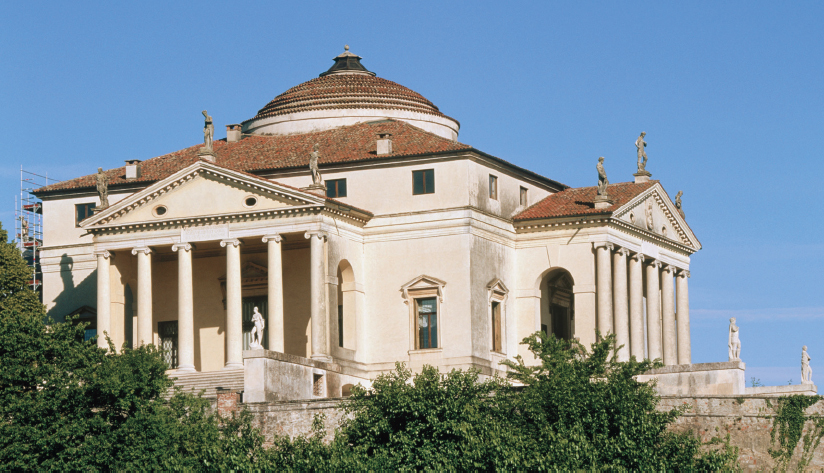Understanding Western Society
Printed Page 359
Chapter Chronology
Changing Artistic Styles
Both the content and style of Renaissance art often differed from those of the Middle Ages. Religious topics remained popular among both patrons and artists, but frequently the patron had himself and his family portrayed in the scene. As the fifteenth century advanced and humanist ideas spread more widely, classical themes and motifs figured increasingly in painting and sculpture, with the facial features of the gods sometimes modeled on living people.
The individual portrait emerged as a distinct artistic genre in this movement. Rather than reflecting a spiritual ideal, as medieval painting and sculpture tended to do, Renaissance portraits showed human ideals, often portrayed in the more realistic style increasingly favored by both artists and patrons. The Florentine painter Giotto (JAH-toh) (1276–1337) led the way in the use of realism; his treatment of the human body and face replaced the formal stiffness and artificiality that had long characterized representation of the human body. Piero della Francesca (frahn-CHAY-skah) (1420–1492) and Andrea Mantegna (mahn-TEHN-yuh) (1430/31–1506) pioneered perspective, the linear representation of distance and space on a flat surface, which enhanced the realism of paintings and differentiated them from the flatter and more stylized images of medieval art. The sculptor Donatello (1386–1466) revived the classical figure, with its balance and self-awareness. In architecture, Filippo Brunelleschi (1377–1446) looked to the classical past for inspiration, creating structures that were carefully thought out to achieve a sense of balance and harmony.
Art produced in northern Europe tended to be more religious in orientation than that produced in Italy. Some Flemish painters, notably Rogier van der Weyden (1399/1400–1464) and Jan van Eyck (1366–1441), were considered the artistic equals of Italian painters and were much admired in Italy. Van Eyck was one of the earliest artists to use oil-based paints successfully, and his religious scenes and portraits all show great realism and remarkable attention to human personality. Albrecht Dürer (1471–1528), from the German city of Nuremberg, studied with artists in Italy and produced woodcuts, engravings, and etchings that rendered the human form and the natural world in amazing detail.
In the early sixteenth century, the center of the new art shifted from Florence to Rome, where wealthy cardinals and popes wanted visual expression of the church’s and their own families’ power and piety. Renaissance popes expended enormous enthusiasm and huge sums of money to beautify the city. Pope Julius II tore down the old Saint Peter’s Basilica and began work on the present structure in 1506. Michelangelo went to Rome from Florence in about 1500 and began the series of statues, paintings, and architectural projects from which he gained an international reputation.

Villa CapraArchitecture as well as literature and art aimed to re-create classical styles. The Venetian architect Andrea Palladio modeled this country villa, constructed for a papal official in 1566, on the Pantheon of ancient Rome. Surrounded by statues of classical deities, it is completely symmetrical, capturing humanist ideals of perfection and balance. This villa and other buildings that Palladio designed influenced later buildings all over the world, including the U.S. Capitol in Washington, D.C., and countless state capitol buildings. (age fotostock/Superstock)
Raphael Sanzio (1483–1520), another Florentine, got the commission for frescoes in the papal apartments, and in his relatively short life he painted hundreds of portraits and devotional images, becoming the most sought-after artist in Europe. Raphael also oversaw a large workshop with many collaborators and apprentices. He wrote treatises on his philosophy of art in which he emphasized the importance of imitating nature and developing an orderly sequence of design and proportion.
Venice became another artistic center in the sixteenth century. Titian (TIH-shuhn) (1490–1576) produced portraits, religious subjects, and mythological scenes. Titian and other sixteenth-century painters developed an artistic style known in English as “mannerism” in which artists sometimes distorted figures, exaggerated musculature, and heightened color to express emotion and drama more intently. (A painting by Titian can be found here; this is also the style in which Michelangelo painted the "Last Judgment" in the Sistine Chapel.)
